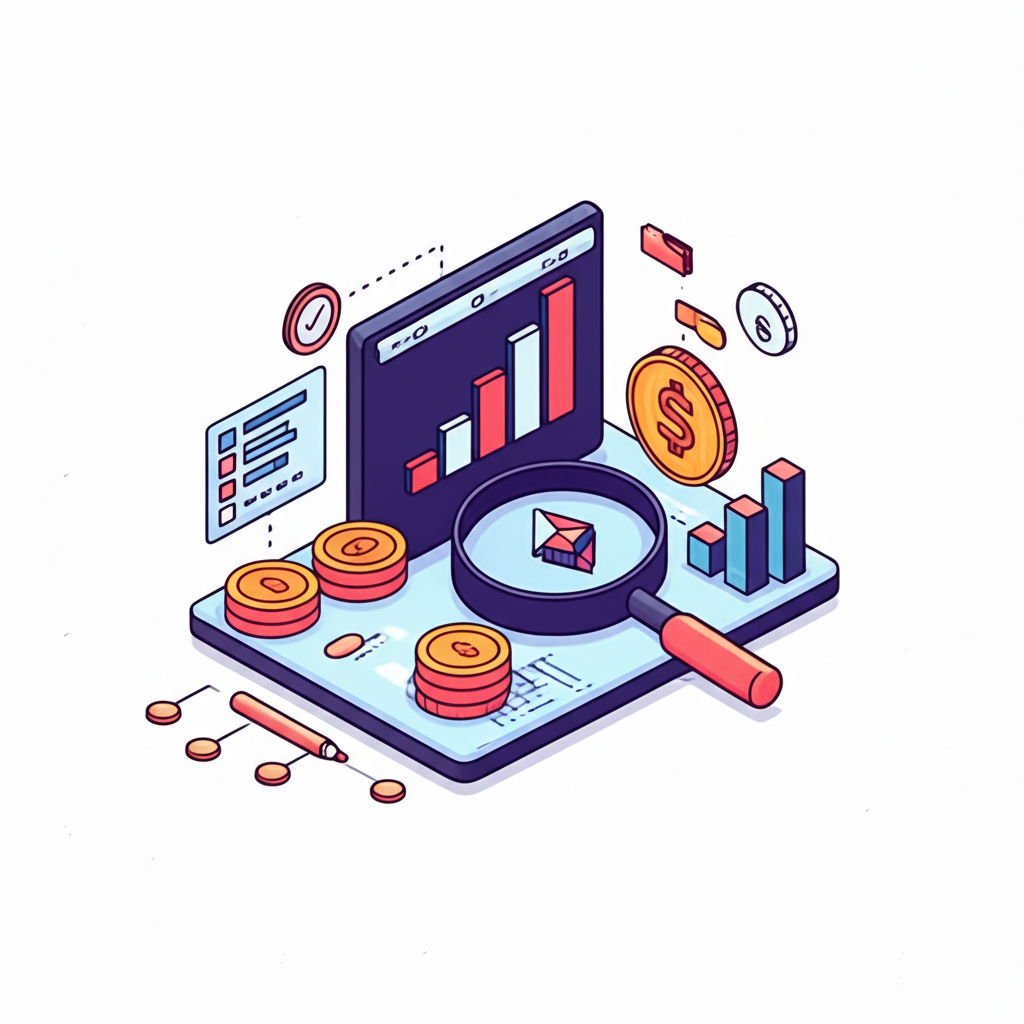Decentralized finance, or DeFi, is reshaping the way people handle money by offering open access to services like lending and trading without relying on banks or other middlemen. For Americans interested in this space, 2025 looks like a turning point, with regulations taking shape, fresh approaches emerging, and more platforms popping up. This guide aims to give you the tools to dive into DeFi as a U.S. investor, from the basics and smart tactics to the real dangers, tax rules, and top platforms you can actually use here.

Whether you’re just starting out and want the fundamentals or you’re ready to fine-tune your investments, this resource breaks down DeFi’s inner workings, the chances it creates, and what U.S. residents need to watch out for. We’ll cover how decentralized lending, staking, and yield farming operate, highlight the specific hazards, and share safe, legal ways to begin-including tips on platforms like Moneta Markets that help you tap into digital assets.

What is DeFi and Why is it Transforming Finance in the United States?
DeFi builds a network of financial tools on blockchain networks, mostly Ethereum, that run independently of traditional gatekeepers like banks. It recreates everyday services-think loans, trades, and even insurance-through direct connections between users. That’s the big difference from conventional banking.
DeFi rests on three main ideas: no one person or group runs the show, every deal shows up on a public ledger for all to see, and once something’s logged, it stays put. These features build confidence and streamline operations, cutting out go-betweens for cheaper, quicker moves. In the U.S., DeFi has exploded in popularity, drawing big money and fresh ideas as more people and companies see how it levels the playing field and opens doors to new wealth-building paths heading into 2025.
[Image: Infographic comparing Traditional Finance vs. Decentralized Finance]
How Does DeFi Investing Work? A US Perspective for 2025
DeFi investing taps into blockchain’s strength and the automation of smart contracts. The blockchain acts as a tamper-proof record book shared across many computers, and smart contracts handle deals automatically based on coded rules-no people required for steps like issuing loans or swapping holdings.
Key pieces of the DeFi world include user-facing apps called dApps for jumping into protocols, pools of locked-up crypto that power trades and loans, and data feeds known as oracles that pull in off-chain info like current prices. U.S. participants often use stablecoins tied to the dollar for steadiness alongside tokens that let them vote on updates. Grasping these elements helps any American investor step in confidently.
[Image: Diagram illustrating the DeFi ecosystem components]
Top DeFi Investment Strategies for US Investors in 2025
DeFi brings a variety of ways to put your money to work, each balancing risks and gains in its own way. For folks in the U.S., getting a handle on these methods is essential for crafting a solid lineup of assets.
Yield Farming: Maximizing Returns on Digital Assets
In yield farming, you shuttle your crypto around different DeFi setups to chase the best payouts. This usually means adding funds to trading platforms or lenders to collect fees and tokens in return. The potential for high yearly yields draws people in, but it’s tricky territory with threats like temporary value dips in paired assets or flaws in the code. U.S.-friendly options often stick to big-name exchanges and loan services, though what’s available can shift with rules from regulators.
Staking: Earning Passive Income with Proof-of-Stake
Staking lets you generate steady earnings by committing your crypto to help run a proof-of-stake network, like confirming blocks in exchange for rewards. You can go deep by running your own node if you’ve got the tech know-how and cash, or use liquid staking to keep some access to your holdings. For American investors, it’s a hands-off option that tends to dodge the wild swings of day trading.
Lending and Borrowing: Accessing Capital and Earning Interest
On DeFi lending sites, you can loan out your crypto for interest or borrow some by putting up extra as security-often more than the loan amount to protect lenders. It skips credit scores for easier access, but if prices tank, borrowers might lose their collateral in a flash sale. Stateside users have options with rates that beat what banks offer, making it a draw for both sides.
Liquidity Provision: Powering Decentralized Exchanges
To provide liquidity, you pair up two cryptos in a pool on a market-making exchange like Uniswap or SushiSwap, letting traders swap them while you take a cut of the fees. The catch is impermanent loss, where shifting prices can chip away at your stake. Still, it’s the backbone of these exchanges and pays off for those who track the market closely.
Other Emerging Strategies: NFTs, Derivatives, and More
The DeFi scene keeps pushing boundaries beyond the basics. NFTs now extend into finance, with loans backed by them or ways to split ownership for broader access. Derivative platforms let you bet on crypto futures or options peer-to-peer. As a U.S. investor eyeing 2025, digging into these calls for solid homework on risks, but they could unlock fresh growth paths in the years ahead.
[Image: Chart showing growth of total value locked (TVL) in DeFi protocols over time]
Risks and Rewards of DeFi Investing for US Citizens
While DeFi opens doors to thrilling prospects, American participants face distinct challenges that demand attention.
Understanding the Rewards: High Potential Returns and Financial Inclusion
What pulls people to DeFi is the shot at yields that outpace bank accounts or standard investments. Lending and staking often deliver strong rates, and farming can multiply your stake quickly. More than profits, it brings services to anyone online, no matter their background or location. Public ledgers add clear visibility, and it fits nicely as a way to spread out risks in your overall holdings, especially in this up-and-coming field.
Mitigating the Risks: A Crucial Step for US Investors
The upside doesn’t come free-here are the main hazards:
- Smart Contract Vulnerabilities: Flaws in the code can drain accounts fast, even with audits that aren’t always perfect.
- Market Volatility: Crypto prices swing hard, throwing off your earnings or wiping out collateral.
- Regulatory Uncertainty in the US: Rules here are in flux, and changes could limit what you do or how it’s taxed.
- Impermanent Loss: Pool providers might see their value slip if asset prices pull apart.
- Scams and Rug Pulls: Bad actors thrive in the open setup, pulling off cons or vanishing with funds.
To handle these, spread your bets across protocols, pick vetted ones with checks, ease in with modest sums, track U.S. policy updates, and always verify details yourself.
The Regulatory Landscape for DeFi in the United States (2025 Outlook)
Navigating DeFi rules in the U.S. means dealing with a shifting scene, and 2025 should bring sharper definitions and possible new laws. Right now, bodies like the SEC handle securities, the CFTC oversees commodities, and FinCEN under Treasury pushes for anti-laundering and identity checks.
Looking ahead, expect pushes to classify assets and protocols under current laws, maybe adding licenses for some activities, tweaking taxes, and tightening identity rules for decentralized setups. Big banks dipping into blockchain will nudge the framework too. U.S. investors should keep an eye out, as shifts could reshape holdings and plans. Check official spots like the SEC and CFTC for the latest.
[Image: Chart depicting key US regulatory bodies and their oversight areas in crypto]
How to Get Started with DeFi Investing as a US Beginner in 2025
American newcomers can ease into DeFi with these core steps:
- Setting Up a Crypto Wallet: Start here-grab a self-managed wallet where you hold the keys. Go for software like MetaMask for quick access or hardware such as Ledger or Trezor for safer storage of bigger amounts.
- Acquiring Initial Cryptocurrency: Buy ETH or dollar-pegged stablecoins like USDC or USDT on compliant exchanges such as Coinbase or Kraken with your dollars.
- Navigating Decentralized Exchanges (DEXs): Link your wallet to a DEX like Uniswap or SushiSwap to trade, add liquidity, or join protocols.
- Best Practices for Security and Privacy: Verify contract details twice, watch for fake sites, turn on extra logins, and guard your recovery words. Remember, DeFi keeps things somewhat anonymous, but chains log everything publicly.
[Image: Screenshot of a popular crypto wallet interface]
Top DeFi Investment Platforms & Brokers for US Investors in 2025
Picking the best platform matters a lot for Americans in DeFi-look at security, costs, ease of use, local access, and rule-following.
Below is a rundown of standout options that open doors to digital assets, including CFD-based exposure that ties into DeFi plays:
| Broker | US Availability | Digital Asset Exposure | Key Advantages for US Investors | Regulatory Oversight |
|---|---|---|---|---|
| Moneta Markets | Yes | Crypto CFDs (e.g., Bitcoin, Ethereum, Litecoin) | Competitive spreads, advanced MT4/MT5 trading platforms, strong educational resources, robust customer support, user-friendly interface for managing digital asset exposure. | FCA (UK), FSA (Seychelles), CySEC (Cyprus) – global licenses supporting their offerings. |
| OANDA | Yes | Crypto CFDs, broad forex/CFD offering | Highly regulated (CFTC, NFA in US), reliable platform, extensive market analysis, API access for advanced users, strong reputation for transparency. | CFTC, NFA (US), FCA (UK), ASIC (Australia), IIROC (Canada), MAS (Singapore). |
| FOREX.com | Yes | Crypto CFDs, broad forex/CFD offering | Regulated (CFTC, NFA in US), broad asset selection, competitive pricing, advanced charting tools, strong educational content, dedicated support. | CFTC, NFA (US), FCA (UK), ASIC (Australia), IIROC (Canada), FSA (Japan), MAS (Singapore). |
[Image: Screenshot of Moneta Markets trading platform showing crypto CFD options]
Moneta Markets: A Strong Contender for US DeFi Investors
Moneta Markets shines for U.S. folks wanting digital asset access via CFDs. It doesn’t run on-chain DeFi but lets you bet on prices of big cryptos like Bitcoin, Ethereum, and Litecoin without owning them outright. With tight spreads and tools like MetaTrader 4 and 5 for charts and analysis, plus learning materials and solid help, it’s straightforward for blending crypto trends into your bigger plan. Moneta Markets holds an FCA license, ensuring strong oversight.
OANDA: A Trusted Broker with Growing Digital Asset Offerings
OANDA brings years of trust and U.S. regulation through the CFTC and NFA. Best known for currency trades, it’s branching into crypto CFDs for safe exposure. The setup is dependable, packed with insights and charts for all levels, plus API tools for pros. Its focus on clear dealings makes it great for mixing digital assets with forex.
FOREX.com: Comprehensive Trading for US Markets
FOREX.com delivers full-service trading under CFTC and NFA rules for Americans. It covers lots of markets, including crypto CFDs for riding price waves on top coins. Low costs, pro charts, learning aids, and helpful staff make it versatile for strategies. It’s ideal for adding crypto to forex and other trades in your mix.
Tax Implications of DeFi Investing for US Citizens
Getting taxes right is non-negotiable for Americans in DeFi to stay IRS-compliant. Crypto counts as property, so many actions spark taxes. Watch these triggers:
- Staking Rewards: Payouts from staking hit as regular income at their value when you get them.
- Yield Farming Income: Farming rewards, like new tokens, count as income right away.
- Lending Interest: Earnings from loans on DeFi sites are ordinary income too.
- Capital Gains/Losses: Trades, swaps, or spends calculate gains or losses from sale value minus your original cost.
DeFi-specific IRS rules are developing, but crypto basics hold. Report everything on your return. Use tracking software for multi-platform deals and talk to a crypto-savvy accountant. Follow IRS updates closely.
[Image: Infographic explaining common DeFi taxable events]
The Future of DeFi Investing in the United States: What to Expect in 2025 and Beyond
DeFi in the U.S. is set for big changes soon. By 2025, expect tighter links to old-school finance as companies test blockchains and stablecoins. Fixes for speed, like Ethereum’s upgrades or faster chains, will cut fees and wait times, pulling in more users.
Better safeguards, from deeper code reviews to math-based proofs, will cut risks. Clearer U.S. rules should steady the ground for new ideas and wider use. All this points to DeFi going mainstream here, reaching everyday people and challenging the financial status quo worldwide.
[Image: Conceptual art depicting TradFi and DeFi converging]
Frequently Asked Questions About DeFi Investing in the US (2025)
Is DeFi a good investment for US citizens in 2025?
DeFi holds real promise for Americans in 2025, with chances for strong yields and cutting-edge tools. That said, risks like price swings, code weaknesses, and unclear rules loom large. Do your homework, weigh your finances, and think diversification-maybe via trusted spots like Moneta Markets for CFD access to assets.
Can you make money in DeFi, and what are the typical returns?
Absolutely, through farming, staking, or lending. Returns range from modest single digits on stable loans to sky-high triple figures in bold farming plays. Higher rewards mean higher dangers, and nothing’s assured-losses happen.
Is DeFi illegal in the US, or is it regulated?
DeFi isn’t banned, but it navigates a tricky, changing rulebook. Agencies like the SEC, CFTC, and Treasury apply old laws to new tech, with some parts clear and others fuzzy. Some activities or tokens fit regulations; stay updated and follow the law.
How can beginners start DeFi investing in the United States?
U.S. starters should get a self-custody wallet like MetaMask, buy base cryptos such as ETH or stablecoins on licensed exchanges, and link up to dApps. Begin small, stick to proven protocols, and build knowledge gradually. For simpler entry, try Moneta Markets’ CFDs on asset prices.
What are the most common DeFi investing strategies for US investors?
Popular ones for Americans:
- Staking: Lock crypto to back a network and collect rewards.
- Lending and Borrowing: Loan for interest or borrow with collateral.
- Yield Farming: Shift assets for max fees and tokens.
- Liquidity Provision: Feed pools on exchanges for trading cuts.
Are there specific DeFi investing apps recommended for the US market?
DeFi runs through wallets like MetaMask or Trust Wallet connected to browser or mobile dApps. For price exposure, U.S.-compliant apps from brokers such as Moneta Markets or OANDA work well.
What are some real-world examples of successful DeFi investments?
Big wins come from early moves in hits like Uniswap liquidity or Ethereum staking. Spotting rising projects or smart farming has paid off big for some. But remember, successes don’t predict the future-plenty of DeFi efforts flop.
How does Moneta Markets support DeFi investing for US clients?
Moneta Markets aids U.S. clients with CFDs on key cryptos, letting them trade price shifts sans on-chain hassles, wallets, or fees. Competitive spreads, pro tools, and guides make it a regulated, easy way to engage the digital market.
What are the tax implications of DeFi yield farming in the US?
Yield farming income, like tokens or interest, taxes as ordinary income at receipt value. Selling or swapping adds capital gains/losses. Track dates, values, and details meticulously for IRS filings.
What are the biggest risks associated with DeFi investing in 2025?
Top worries for 2025 include volatile markets, contract hacks draining funds, pool losses, U.S. rule shifts on access or taxes, plus scams, phishing, and the steep learning curve.



No responses yet